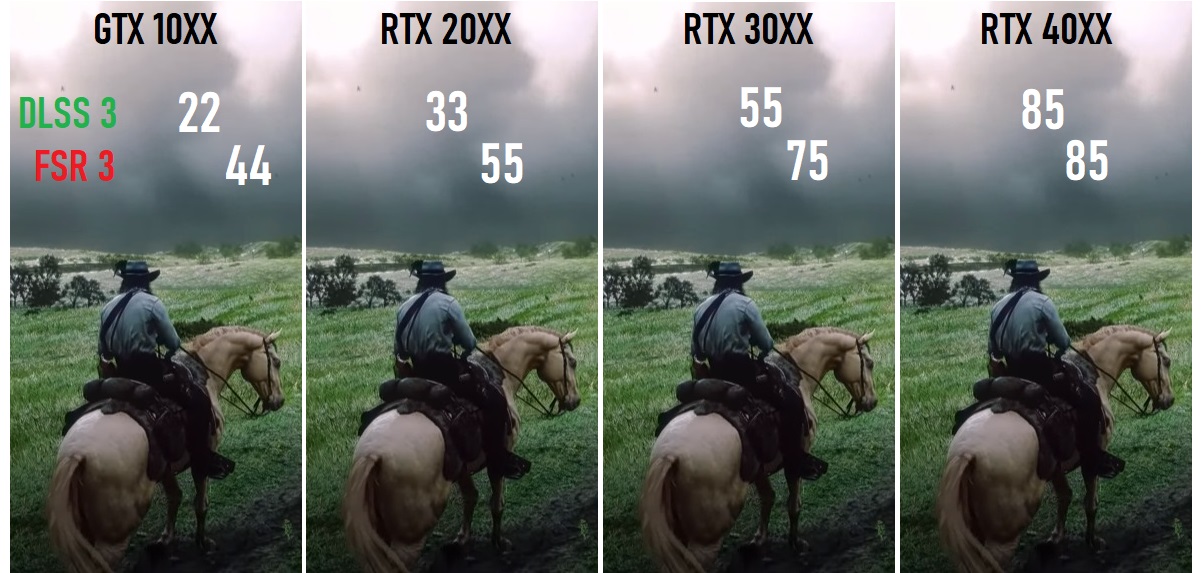Are you torn between AMD’s FidelityFX Super Resolution (FSR) and NVIDIA’s Deep Learning Super Sampling (DLSS) for upscaling at 1080p? This comprehensive comparison dives into the performance, image quality, and overall gaming experience of both technologies to help you make an informed decision.
Key Takeaways:
- Native rendering often delivers the best image quality at 1080p.
- DLSS typically provides superior results compared to FSR at this resolution.
- FSR may exhibit stability issues, shimmering, flickering, and reduced fine detail reconstruction.
- While DLSS offers better image quality, both DLSS and FSR provide a significant performance boost over native rendering.
- AMD’s FSR technology may require significant improvements for competitive performance at lower resolutions.
Now, let’s delve deeper into the comparison between AMD’s FSR and NVIDIA’s DLSS at 1080p resolution.
Image Quality Comparison:
| Game | FSR Performance | DLSS Performance | Winner |
|---|---|---|---|
| Cyberpunk 2077 | Blurry, ghosting issues | Generally superior quality | DLSS |
| Ratchet & Clank: Rift Apart | Subpar image quality | Superior to FSR | DLSS |
| Dead Space | Reasonable, less ghosting | Slightly less stable, more ghosting | Draw |
| Spider-Man: Miles Morales | Moderate downgrade | Similar quality to native | DLSS |
| Call of Duty: Modern Warfare 3 | Grainy, unstable | More stable, better detail | DLSS |
| Star Wars Jedi: Survivor | Horrible image quality | Generally superior quality | DLSS |
| Hogwarts Legacy | Grainy, less stable | Superior to FSR | DLSS |
| Starfield | Usual FSR issues | Generally superior quality | DLSS |
| The Talos Principle 2 | Very grainy, poor stability | Significantly better quality | DLSS |
| Assassin’s Creed: Mirage | Inferior image stability | Generally superior quality | DLSS |
Note: DLSS consistently outperforms FSR in terms of image quality across various games.
Performance Analysis:
- DLSS vs. FSR Performance: Both DLSS and FSR offer a significant performance boost over native rendering, with DLSS rendering a few frames faster on average.
- Average Performance Improvement: Users can expect around a 35% increase in performance at 1080p when utilizing DLSS or FSR, though performance gains may vary depending on the title.
- Hardware Acceleration: DLSS utilizes hardware AI acceleration on NVIDIA’s tensor cores, while FSR relies solely on shader processing.
- Overall Performance Impact: DLSS and FSR offer comparable performance improvements, making them viable options for gamers seeking higher frame rates without sacrificing image quality.
Final Thoughts:
After extensive testing of DLSS and FSR at 1080p resolution, it’s evident that DLSS consistently outperforms FSR in terms of image quality and stability. While both technologies provide a significant performance boost over native rendering, FSR often falls short in delivering satisfactory visual fidelity.
AMD’s FSR technology may require substantial improvements to become a competitive alternative to DLSS at lower resolutions. Given the popularity of 1080p gaming, addressing these shortcomings is crucial for AMD to remain competitive in the GPU market.
In conclusion, while DLSS remains the superior upscaling solution for 1080p gaming, continued advancements in both DLSS and FSR are essential for providing gamers with the best possible gaming experience.
Your Input Matters:
What has been your experience with DLSS and FSR at 1080p resolution? Share your thoughts and insights in the comments below!
Remember, your feedback helps us create content that’s tailored to your needs and preferences. Subscribe for more in-depth comparisons and gaming insights!














